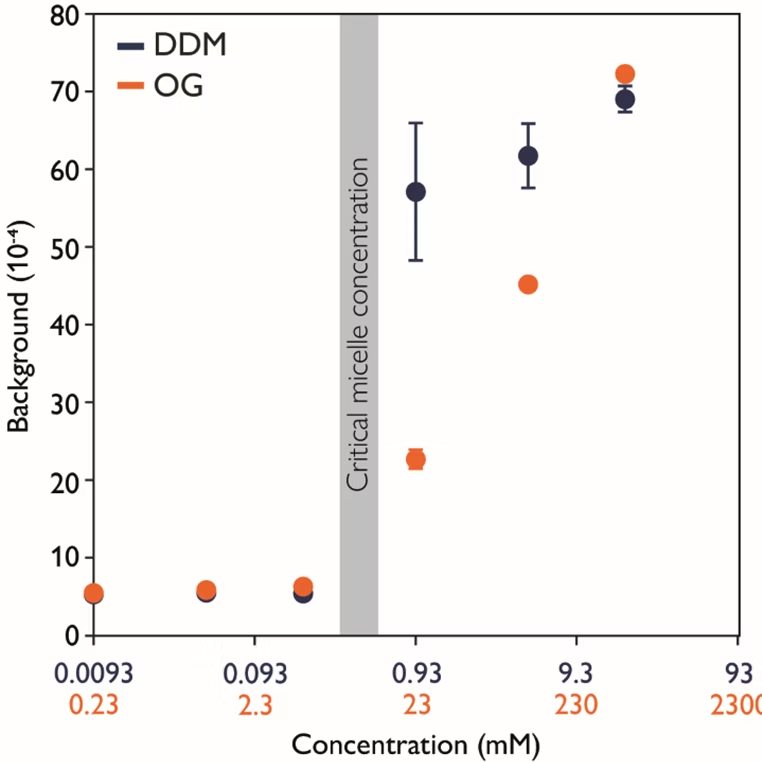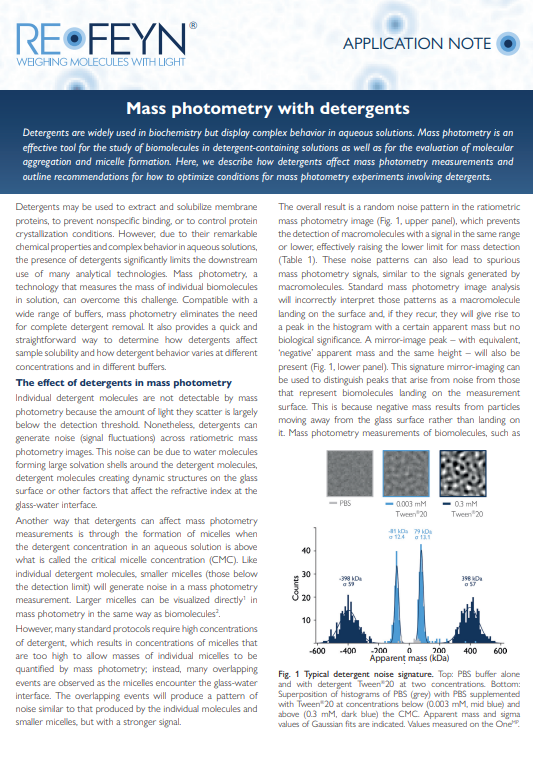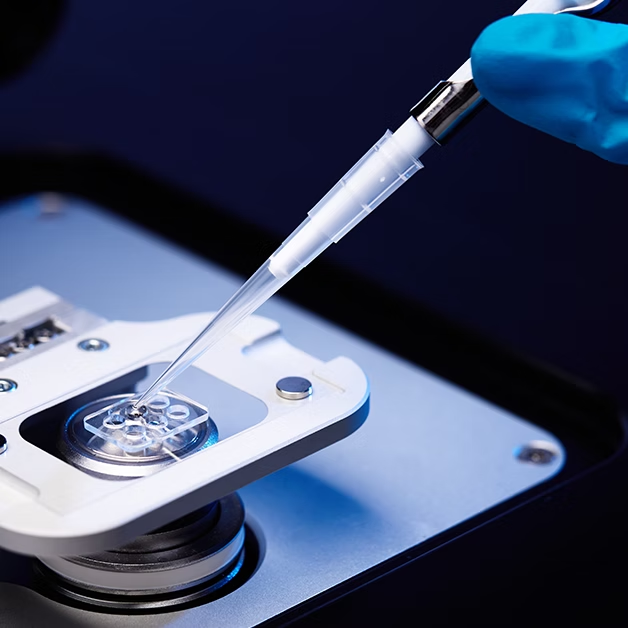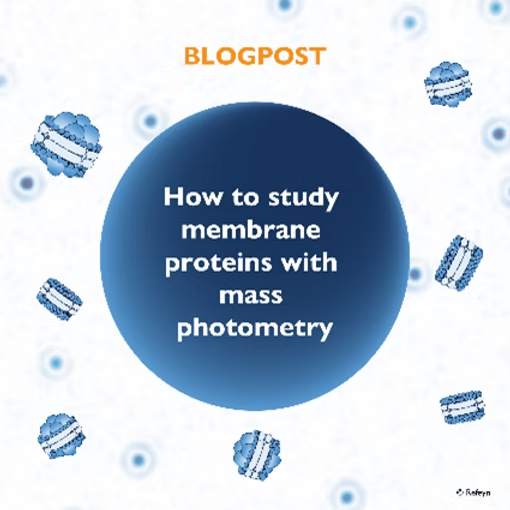Mass photometry characterizes samples containing detergents
Membrane protein extraction and solubilization
Membrane proteins fulfill vital biological roles, representing a significant portion of potential therapeutical targets for a variety of diseases. As studying their native behavior is important, detergents and other membrane mimetics can be used for membrane protein solubilization prior to functional or structural studies.
Detergents are widely used for membrane protein extraction and throughout the protein purification process – detergents can also act as membrane mimetics for membrane protein solubilization. However, their presence in samples can interferes with some analytical techniques.


Characterizing membrane protein samples that include detergents
Mass photometry can measure samples containing detergents, eliminating the need for complete detergent removal. It works with a wide range of buffers, including those used for membrane protein extraction and solubilization.
As measurements take less than 5 minutes and readily detect protein aggregation, it is easy to characterize membrane protein samples. Moreover, mass photometry can detect detergent micelles, which makes it possible to determine the critical micelle concentration (CMC) of detergents under different conditions
To learn how mass photometry interacts with commonly used detergents
Mass photometry with detergents

Additional resources
WEBINAR: Investigating membrane protein complexes with mass photometry
This webinar shows the applications of mass photometry for the study of two examples of macromolecular complexes formed by eukaryotic membrane proteins. In both cases, mass photometry supported the use of detergents for membrane protein extraction and solubilization. The webinar showcases what mass photometry can do, and what makes it suitable for studies of membrane protein complexes.


BLOG POST: How to study membrane proteins with mass photometry
Mass photometry provides valuable information on the purity and behavior of samples containing membrane proteins and membrane mimetics like detergents. In this blog post, we examine the role of mass photometry in membrane protein analysis and describe case studies that illustrate how mass photometry is contributing to the field.
For more information on analyzing membrane proteins with mass photometry
More Application Notes
Browse through our catalogue of application notes highlighting some recent case studies featuring mass photometry.
